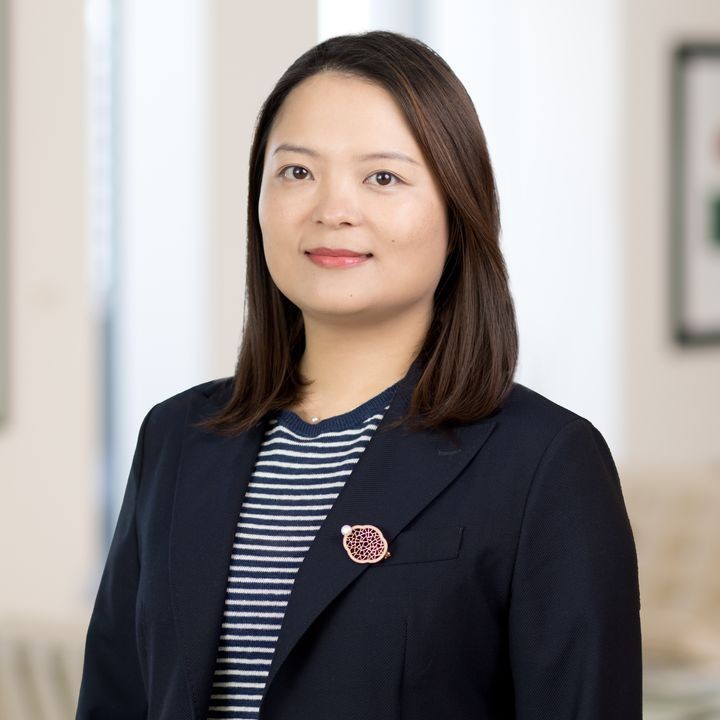Fundamental Copyright Principles Underscored in AI Context: Voice Attributes Are Not Protectable
What You Need to Know
Key takeaway #1
The Southern District of New York dismissed copyright claims relating to AI outputs mimicking voice attributes, but allowed Plaintiffs to amend their copyright claims related to AI training.
Key takeaway #2
This case highlights the limitations of federal trademark and copyright law in protecting voice actors against AI cloning and emphasizes the importance of state laws and creative claims in addressing legal challenges posed by AI technologies.
Client Alert | 3 min read | 07.28.25
The Southern District of New York issued a recent opinion in Lehrman et al v. Lovo, Inc., 1-24-cv-03770 (SDNY Jul. 10, 2025) (J. Paul Oetken) regarding copyright infringement issues involving artificial intelligence models, focusing this time on voice cloning. Two voice-over actors, Paul Lehrman and Linnea Sage, filed a lawsuit against Lovo, Inc., a company specializing in AI-driven text-to-speech services. The Plaintiffs alleged that Lovo used artificial intelligence to clone their voices without authorization, raising complex legal questions regarding intellectual property and privacy rights in the age of AI.
Lehrman and Sage, both established voice-over actors, discovered that Lovo had used their voice recordings to create AI-generated voice clones, which were marketed under fictitious names. These cloned voices were said to be “identical to” the Plaintiffs’ voices—a “replica,” according to professionals experienced in “discerning and conveying small differences in voice tone, quality, timbre, and delivery.” These clones were offered to Lovo's subscribers as part of a text-to-speech service. The Plaintiffs claimed that Lovo's actions violated New York civil rights and consumer protection laws, the Lanham Act, and the Copyright Act, along with common-law claims of contract, fraud, conversion, unjust enrichment, and unfair competition. Lovo moved to dismiss all the claims.
The court granted Lovo's motion to dismiss claims under the Lanham Act and most copyright claims. But claims under New York Civil Rights Law and consumer protection laws moved forward, and the Plaintiffs were granted leave to amend their copyright claims related to AI training. The court found that the copyright claims failed due to a lack of adequate explanation regarding how the Plaintiffs’ voices were used in the training, “even at a very high level of generality.” (The court did not allow Plaintiffs to amend their copyright claims related to AI outputs, i.e., the cloned voices themselves.)
Lehrman and Sage argued in their opposition to the motion to dismiss that the AI model can generate new recordings that imitate characteristics of their voices, such as pitch, loudness, tone, timbre, cadence, inflection, breathiness, roughness, strain, jitter (variation in pitch), shimmer (variation in amplitude), spectral tilt, overall intelligibility, and other qualities, such that the new recordings constitute unauthorized copying and infringe their copyrighted voice. The court’s comments were brief and direct: “Copyright protection does not extend to this kind of imperfect mimicry, even when accomplished using advanced technology rather than more traditional techniques like musical covers or impersonations,” and “What Plaintiffs are essentially asking for is copyright protection for their voices qua voices.” However, copyright must focus on the expression of ideas, not the ideas themselves, and does not extend to something as abstract and intangible as a voice per the court’s ruling. Therefore, the Plaintiffs' copyright claims based on the AI model's output were dismissed.
This case is one of a series of opinions this year addressing the intersection of AI technology and copyright infringement. Two California judges delivered closely followed rulings in June, both finding that, for different reasons, the accused AI training using copyrighted materials constituted fair use. Read more at AI Companies Prevail in Path-Breaking Decisions on Fair Use. It will be interesting to follow the Lehrman case for potential future rulings about using the Plaintiffs’ voices in training the AI, should the Plaintiffs amend their complaint on these claims. Another significant case drawing attention is the multidistrict litigation in the same district court, which involves The New York Times Co., The Center for Investigative Reporting Inc., and eight regional newspapers owned by Alden Global Capital, including the New York Daily News, accusing OpenAI of using substantial portions of their content to train its language models in violation of copyright law.
Contacts
Insights
Client Alert | 4 min read | 12.31.25
Raising the Bar: New York Expands Consumer Protection Law with FAIR Business Practices Act
New York Governor Kathy Hochul has signed into law the most significant update to New York’s consumer protection law in 45 years — the Fostering Affordability and Integrity through Reasonable Business Practices Act, or FAIR Business Practices Act — expanding the scope of the state’s authority to now challenge unfair and abusive business practices. The measure, backed by New York Attorney General (“AG”) Letitia James and signed on December 19, 2025, amends New York’s General Business Law § 349, giving regulators new tools to protect consumers and promote fair marketplace practices.
Client Alert | 4 min read | 12.30.25
Client Alert | 6 min read | 12.30.25
Investor Advisory Committee Recommends SEC Disclosure Guidelines for Artificial Intelligence
Client Alert | 2 min read | 12.29.25
FYI – GAO Finds Key Person “Available” Despite Accepting Employment with a Different Company




